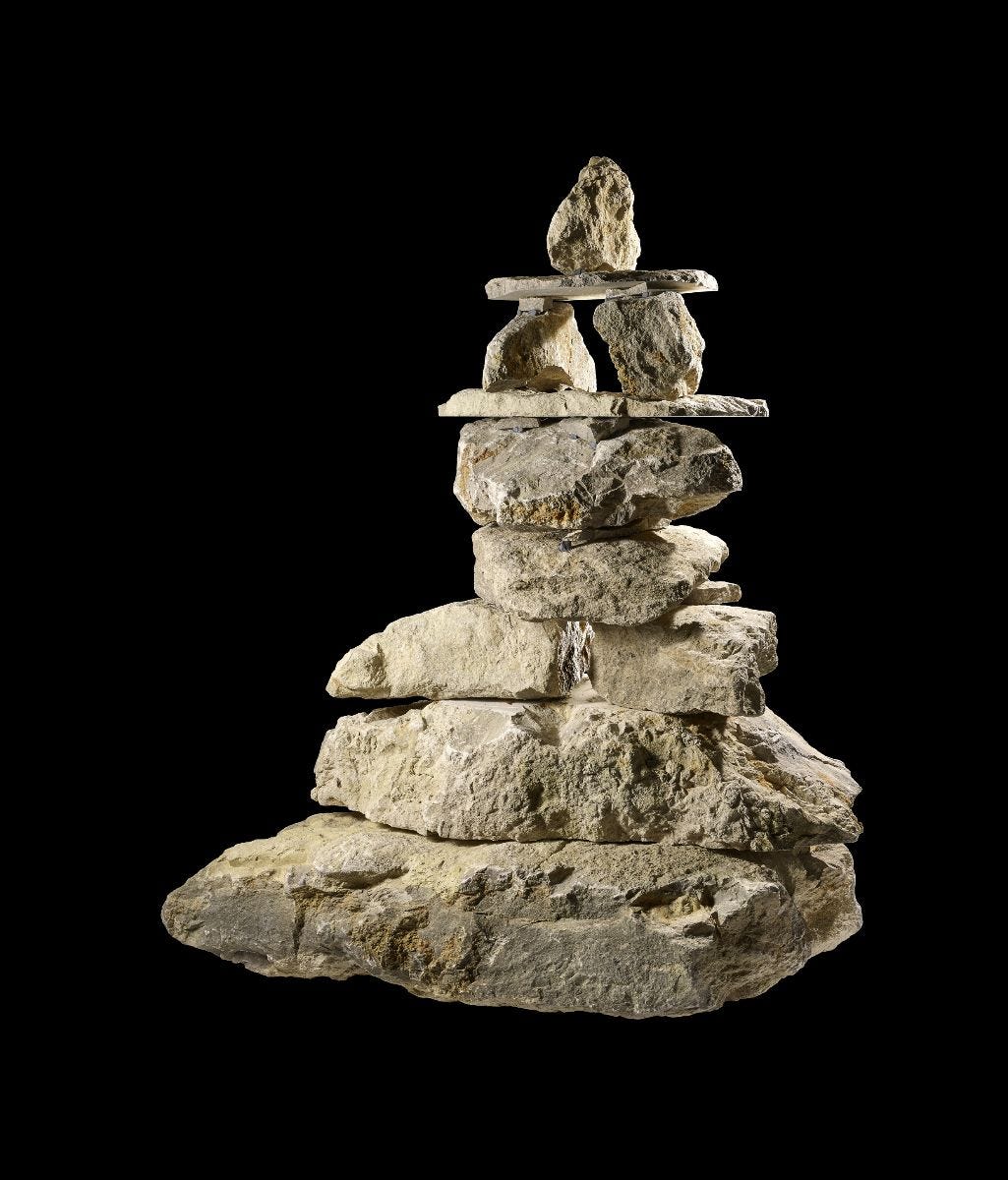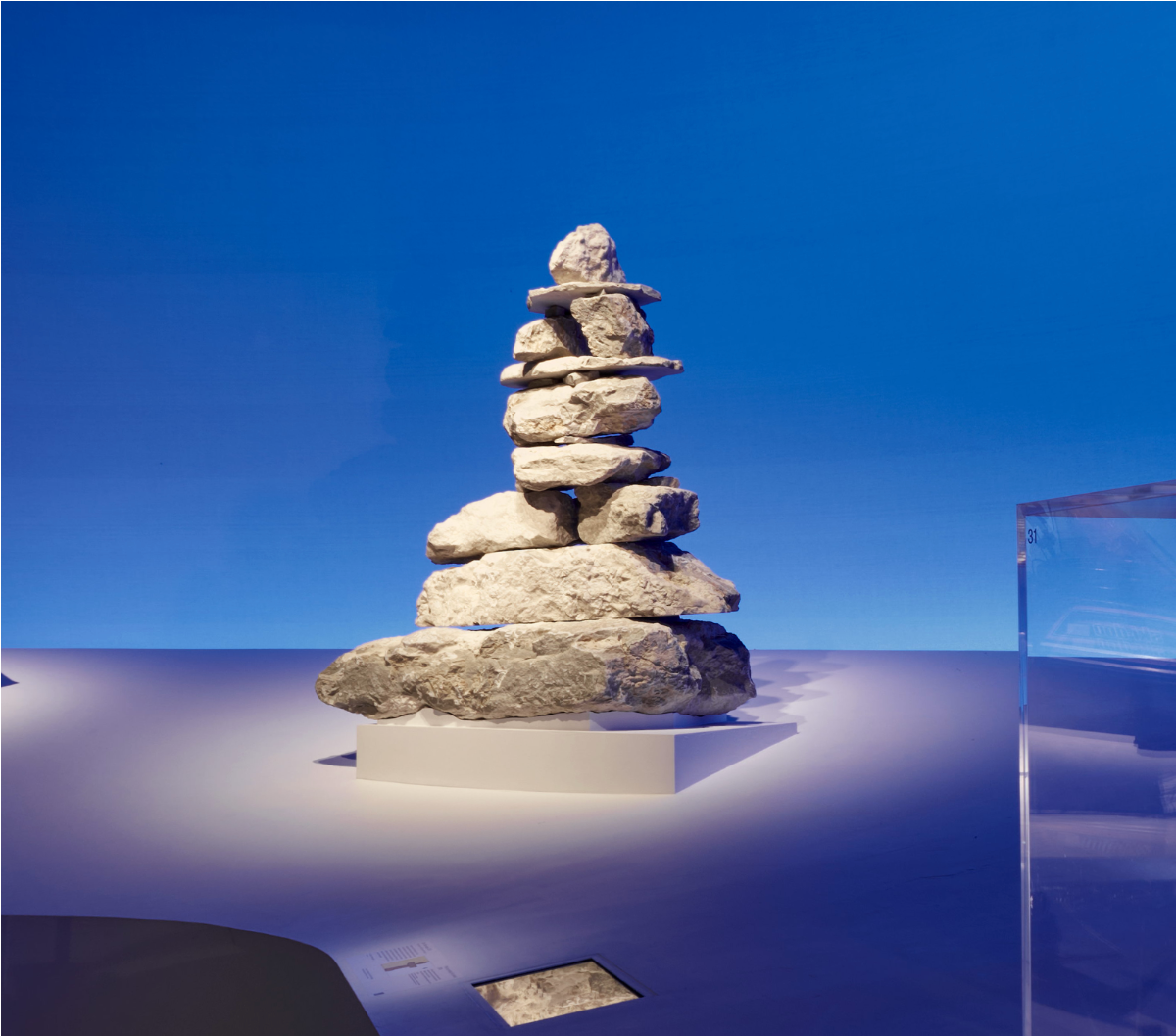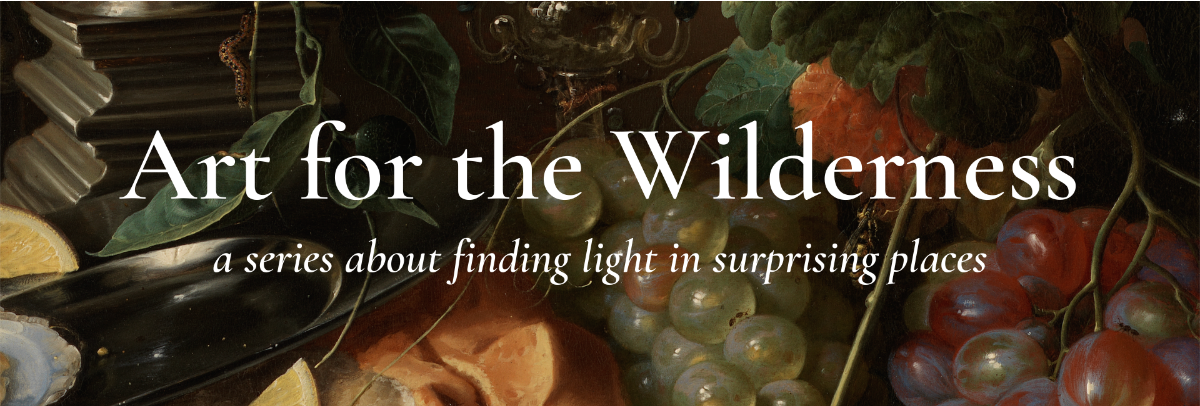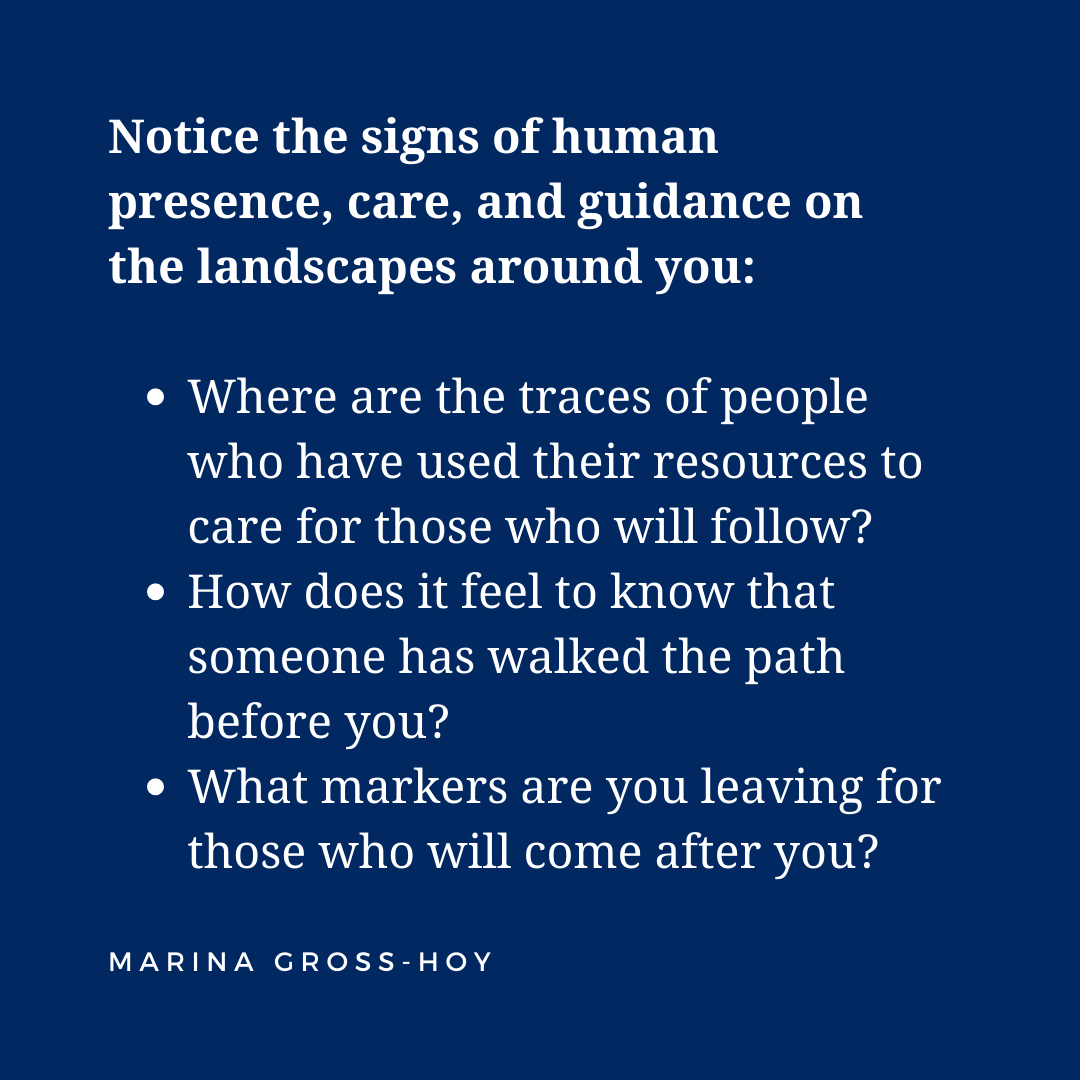Art for the Wilderness 2: Someone Has Been Here Before You
Looking for traces of human presence on the landscapes around us
This seven-week series explores what we can learn about navigating the wilderness from artists who engage with difficult experiences through their art.
Hello friend,
This week, we will be guided by an artist who creates land markers to help travelers navigate the wilderness.

This object, made of carefully stacked stones, is an inuksuk (ᐃᓄᒃᓱᒃ), an Inuktitut word that means “to act in the capacity of a human”. The Inuit have created these structures for millennia as place markers on the Arctic tundra.
Inuksuit (the plural form of inuksuk) communicate a wide range of messages. They can point the way to good hunting areas, to a ceremonial site, to a place where food or supplies have been stored. Some inuksuit have windows that align with astronomical sights, like the mid-winter moon. They can be used as fences for hunting caribou herds; they can communicate warnings about dangerous routes. Some inuksuit mark a sacred place; others show travelers the way home.
But the inuksuk we are looking at here was created for an entirely different context: a museum gallery in London.
Piita Irniq, an Inuk elder, politician, and artist, was invited by the British Museum to participate in Arctic: culture and climate, a 2020 exhibition about how Indigenous peoples harness the harsh Arctic weather to thrive, and how climate change is already having serious impacts on their communities.
Irniq went to a quarry in Kent to select local stones and assembled his inuksuk back at the museum. He adapted a traditional Inuit structure for a new context, for visitors who were mostly unfamiliar with its visual language.
If inuksuit are created to share a certain message in specific place, what does Irniq's inuksuk communicate in this museum gallery across an ocean from the Arctic?

Inuksuit are powerful symbols of Inuit culture and resilience. Here's how Irniq describes their meaning:
"Inuksuk is a silent messenger for Inuit, a voiceless land marker. It symbolizes the survival of Inuit. When I am around inuksuit I am never scared because I know my ancestors survived here for thousands of years and will continue to survive for thousands more. [This inuksuk] will give the people here an opportunity to learn how we have innovated and survived since time immemorial."
Piita Irniq knows about cultural and personal resilience. He was raised in a traditional Inuit lifestyle, until he was forcibly removed from his family to attend a residential school. These schools for Indigenous children, run by Christian churches with funding from the Canadian government, were sites of horrific abuse and cultural genocide.
Irniq has dedicated his adult life to advocating for his community, including promoting Inuit traditional knowledge and the Inuktitut language. He participated in the work of the Truth and Reconciliation Commission of Canada, calling for accountability and justice.
And he creates inuksuit that are displayed across the world.
Through the generosity of his art, Irniq shares his creativity and cultural knowledge—passed down through generations of Inuit people—with the global community. His inuksuit become cross-cultural messengers to help guide us towards care for each other and our planet.
This next week, I invite you to practice looking for the traces of human presence, care, and guidance on the landscapes around you.
When you feel uncertain of your next steps, look for signs of the people who have been here before you. As you navigate your way through treacherous terrain, notice what you leave behind to guide those who follow.
I tried this practice on a walk recently. It was my first moment to myself after an intense period of COVID isolation with a toddler, and I felt utterly depleted. I looked around me and saw the literal footsteps of the people who had walked on the snowy sidewalk before me. I saw salt on the ground and pictured of the teams of people who had worked to make it so I wouldn’t slip on the ice.
I thought of the long line of strong women doing difficult things who have come before me, the lineage of mothers facing similar moments of exhaustion with courage, the stories I know and the stories I will never hear. I felt comfort knowing they had been here, in this quiet and private place, before me.
And I imagined my child one day walking this path in his own life. What signs would I want to leave him? I imagined creating a place marker in my heart that could one day meet him in his own wilderness. Child, I have wandered this place before you. Here is where I found nourishment and that is the way home. You are not alone.
Whatever you are facing, you are not the first on this path and you will not be the last. We are connected to each other across vast distances in beautiful and mysterious ways.
The third installment of Art for the Wilderness will be sent out next Sunday.
Remember, even in utter isolation, we are never alone.
Warmly,
KEEP EXPLORING
Watch Piita Irniq construct his inuksuk at the British Museum, listen to him talk about the meanings of inuksuit, and read more about his life story
Take a free online class that explores Indigenous histories and contemporary issues in Canada (recommended by none other than Schitt's Creek Dan Levy!)
Learn more about the Indigenous presence in the territory where you live
'Serious loneliness' is rampant, especially for mothers of young kids. If you are lonely, you are not alone (and there is nothing wrong with you).






